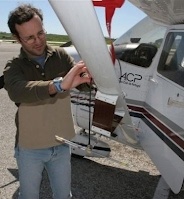Marques, J.T., Ramos Pereira, M.J. & Palmeirim, J.M. (2016) Patterns in the use of rainforest vertical space by Neotropical aerial insectivorous bats: all the action is up in the canopy.
Ecography,
39(5), 476-486. DOI:10.1111/ecog.01453 (IF2016 4,902; Q1 Ecology)
In tropical rainforests environmental conditions vary dramatically from the ground to the canopy, resulting in a marked stratification in the way vertical space is used by organisms, but research work is often limited to the understorey layer. Aerial insectivorous bats are a highly diverse group that plays key roles in the ecology of rainforests, but their use of vertical space remains elusive. Using automatic ultrasound recording stations placed in the canopy, subcanopy and understorey we tested if bat activity and species diversity are vertically stratified, both in the forest interior and near the edges of water bodies. These patterns were tested separately for individual species, and for two functional groups - open space and edge space bats. Insectivorous bat activity increased by roughly seven fold, and species diversity doubled, from the understorey to the canopy. Both edge space and open space bats were more active in the upper strata, but this tendency was much more accentuated in the latter. Myotis riparius was the only species with greater activity near the understorey. These patterns were altered at the edges of water bodies, where vertical stratification was much less marked. The observed patterns are parsimoniously explained by constraints imposed by vegetation clutter that change across strata, which affect bat species differently. Only bats better adapted to closed spaces are usually capable of foraging within the understorey, whereas the majority of species can exploit the free spaces immediately below the canopy; open space bats seem to concentrate their activity above the canopy. This importance of the inter strata open spaces for bat foraging highlights the need to preserve pristine stratified rainforests, as even selective logging usually disrupts vertical stratification. Moreover, the concentration of insectivorous bats at the upper strata of rainforests underlines the need to include canopy level sampling in ecological studies.


